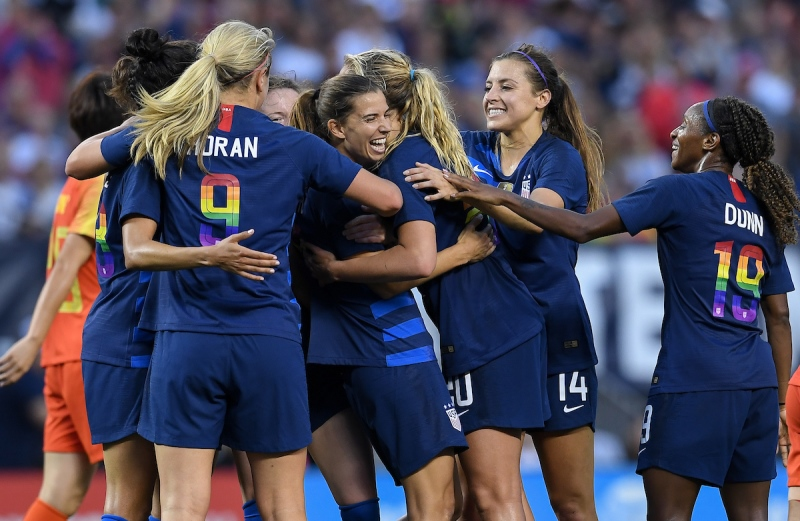The eighth ever Women’s World Cup will start on June 7—and unlike last summer, when the U.S. men’s team didn’t make it to the tournament, the United States women’s team not only qualified, they’re the reigning champions.
As one of the most successful women’s soccer teams in the world, the U.S. women’s national team is one to watch. They’ve won three World Cup titles and four Olympic gold medals, among a heap of other wins at international championships.
In the past, the U.S. women’s national team (USWNT) has boasted players like Mia Hamm, Brandi Chastain, and Abby Wambach.
In 2013, Wambach broke Hamm’s record and became the highest scoring international player of both men and women.Her record stands at 184 international goals scored (as opposed to Christian Ronaldo’s 85 as one of the top international players in the men’s league, but who’s counting?) Wambach’s book “Wolfpack” came out April 9. It’s inspired by a commencement speech she gave at Barnard College in 2018.
Hamm played for the national team for 17 years and was the first woman inducted into the World Football Hall of Fame in Mexico. Brandi Chastain famously won the penalty shootout in the 1999 World Cup against China and was inducted into the National Soccer Hall of Fame in 2017 and the Bay Area Sports Hall of Fame in 2018.
While the final roster hasn’t been announced for the 2019 World Cup, there are a few players on the current roster who are certain to make the cut. First up will be co-captains Carli Lloyd and Alex Morgan, both who have over 100 international goals—a feat that Morgan reached in a match against Australia just earlier this month.
With only a three series send-off game standing between the USWNT and the start of World Cup, the crew going to France could be announced anytime. Favorites for the final list include forwards Megan Rapinoe and Tobin Heath, midfielders Lindsay Horan and Julie Ertz, and defenders Abby Dahlkemper and Crystal Dunn.
The team has made headlines for their work in advocating for equal pay. On International Women’s Day of this year, March 8, they filed a gender discrimination suit against the U.S. Soccer Federation (USF) with the Equal Employment Opportunity Commission (EEOC).

In 2016, the team made headlines when five of the top players first filed a wage discrimination action with the EEOC against U.S. Soccer. This action was taken after the players submitted a proposal for equal pay in their new collective bargaining agreement (CBA).
In 2016, the players noted that, despite the women’s team bringing in $20 million more in revenue for U.S. Soccer, their compensation differed dramatically from the men’s team. For instance, the men’s team was awarded $9 million after reaching round 16 in the 2014 World Cup held in Brazil, while the women’s team earned $2 million for winning the entire tournament in 2015.
In 2017, U.S.F. announced that it had reached a new CBA with the USWNT, ensuring a pay increase as well as increases to the bonuses and per diems that were also paid differently to the men’s team than the women’s team, although the CBA did not include equal pay for equal work between the men’s team and the women’s team.
This is what has lead to the most recent lawsuit, which was filed earlier this year by all 28 members of the USWNT. The lawsuit alleges institutional discrimination based on compensation, difference in playing, training and travel conditions. Developments on the lawsuit are not expected before the tournament begins.
The tournament will take place in France at stadiums all around the country, from Paris to Rennes to Marseilles and Lyon. Sales for the opening match, the semifinals and the final have sold out in record time.
The matches will be broadcast on FS1 in the U.S., and two great places to watch in the East Bay are Commonwealth Pub at 2882 Telegraph Ave. and the Athletic Club at 59 Grand Ave. and Webster St. You must be 21 or older to go into the Athletic Club past 7 p.m. Both places are a quick walk off the NL line from Mills.
Although the first part of the tournament, the group stages, is predicted to be an easy few wins for the U.S., the knockout stage is going to be a lot tougher. Whatever the outcome, the tournament stands as another opportunity for the USWNT to bring their momentum to women’s sports.
